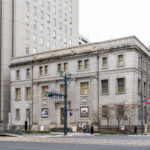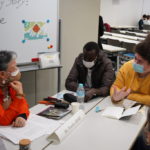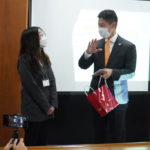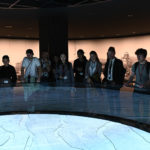II The Reconstruction of Hiroshima
A total of 115 war-ravaged cities in Japan, including Hiroshima, were designated as cities to be reconstructed under the national government reconstruction project. However, the damage and destruction caused by the A-bomb in Hiroshima had different features from those of cities that suffered air raids by conventional weapons.
On August 6, 1945, the city of Hiroshima suffered a catastrophic damage as an American bomber dropped an atomic bomb over its skies. It is said that around 140,000 people (roughly 40% of the population) dies within the year of the bombing. 2) Just before the bombing, there were 76,317 buildings in Hiroshima City. Of those, 70,147, roughly 92% of all the buildings, were destroyed, burnt or deemed unusable. 3) Also, the overall land area of the city at the time was 72,700,000 square meters, of which about 18% or 13,250,000 square meters was burnt. Excluding mountains, forests and unused fields, the usable land area of the city was 33,000,000 square meters, of which around 40% was reduced to ashes. 4)
In this way, the mortality rate and scale of destruction experienced in Hiroshima, overwhelmingly greater than that of other cities, proved to be unique. There are also other distinctive characteristics of the damages incurred in Hiroshima.
First, as a result of the near precision of the American bomber in hitting the target area, Hiroshima, which historically developed as a castle town, and its central military, administrative, and commercial facilities located around the castle area were almost completely obliterated. Next, many residents became the victims of radiation exposure from the nuclear weapon. So, the postwar administration faced a major issue of addressing the radiation damages unique to the atomic bombing. Furthermore, as the Fifth Division of the Army had been located in Hiroshima since the Meiji period, Hiroshima had developed as a military city, assuming important military functions from the time of the First Sino-Japanese War until the end of World War II. After the defeat in the war and the dismantling of the Imperial Japanese Army, Hiroshima found itself in need of building a new identity under the “Peace Constitution.”
These characteristics of the damage Hiroshima suffered in the war are closely related to the challenges Hiroshima faced in the process of reconstruction. In regards to Hiroshima’s reconstruction, there are different aspects of the process to be considered. The entire local community, including the government administration, economic circles, and citizens, worked together for the sake of reconstruction, and various projects involving the political, economic, and cultural sectors were undertaken. As a result, the Hiroshima of today which is defined by “peace” gradually began to take shape. In order to shed light on that complex process, it is necessary to look back and see what was lost in Hiroshima in the war and in the atomic bombing, and what was gained.
Notes
2. Atomic Bomb Survivors Relief Department, the City of Hiroshima (Ed.). Genbaku Hibakusha Taisaku Jigyo Gaiyo, Heisei Nijuyo Nen Ban (Overview of the Atomic Bomb Survivors Measures Project 2012). p. 15.
3. City of Hiroshima (Ed.). Hiroshima Genbaku Sensaishi: Daiikkan (Record of the Hiroshima A-bomb War Disaster, Vol. 1). pp.194-195.
4. City of Hiroshima (Ed.). Hiroshima Shinshi: Keizai Hen (History of Postwar Hiroshima: Economy). p. 9.
Tags associated with this article








